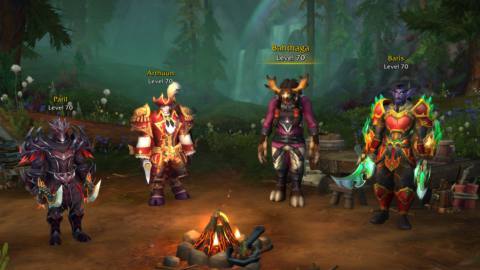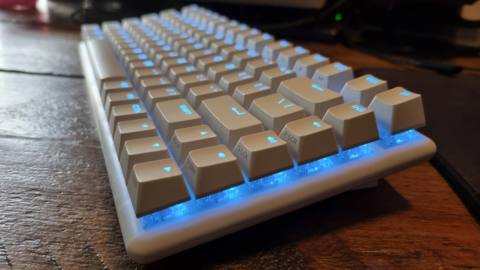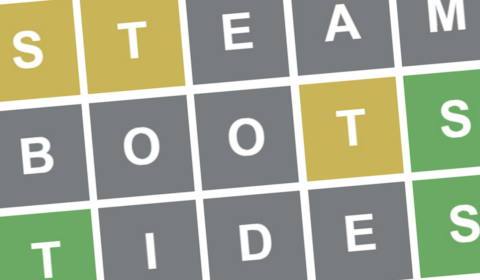The visitors to my town in Go-Go Town have a lot of suggestions. One wants water, so I build a water fountain on the street. One thinks I should sell 20 pet rocks. Oddly specific, but I can do that—once I build a craft shop, hit the mine, and gather more stone. In between satisfying the demands of tourists, who then move in as I build houses for them, I explore the limits of my little town. On the northern fringe, on the far side of a lake, there's a crashed drone that keeps beeping. It seems messy. I ride around on my bike and clear it up, at which point I'm surprised to find a text log.
I was not expecting lore in my cute early access town management sim. Yet here it is, a report from a town scouting agent explaining the parameters of their search, which include “low economic turnover + high levels of misplaced community trust.” Rude! My pet rock-based economy is going to take off any day now.
Cheryl Vance, game director at indie studio Prideful Sloth, explains that Go-Go Town does indeed have a story. “We do actually have a setup for it in a cinematic,” she says, “but we just never had time to get to work on it before we got into early access. At some point, we will go back to that cinematic and actually fix it.”
As the introductory cutscene will show, you didn't inherit Go-Go Town because your grandfather died or anything like that. Instead, you read a leaflet that promised an opportunity to be your own boss and make your own hours. “It's the total internet scam job basically,” Vance says. As soon as you sign up you're abducted and dropped off in the remote town you're now in charge of.
To be fair, even without a cinematic the beginning of the game sets this up just fine by having you arrive in a duffel bag dumped out of a van, with the tutorial delivered by suit-wearing men in black. It's an unexpectedly sinister introduction to a miniaturized city builder that's all about whimsy, where you ride around town on a skateboard or in a dinky little pickup fixing your town to attract the tourist dollars of guests who include aliens and a pack of friendly wolves.
Unlike, say, SimCity, you don't spend a lot of time looking at the menu. I physically grab a chainsaw to chop down trees so I can turn the wood into planks, and hit stone with my drill before I can make bricks. Then I scoot over to a block of land, clear some weeds and leaves by hand, and plonk down the next structure I need.
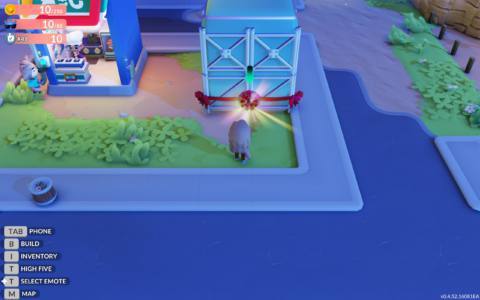
“We wanted all of the actions in the game to be very hands-on, very tactile” says Anthony Massingham, programmer on Go-Go Town. “A term we used when we were developing was 'no hidden pockets'. A lot of these sorts of games, you collect something, it goes in your backpack, and it's invisible. It's hidden. But we wanted to make everything very tactile. When you pick up something it's visible in your backpack. When you want to interact with something you have to use a tool or you physically interact with the object yourself.”
“Anything an NPC can do a player can do,” Vance adds. “And anything a player can do an NPC can do. There's probably a few roles that aren't quite there yet.”
“The general eventual goal is, yeah, anything that an NPC or a tourist can do, the player should be able to do as well,” Massingham agrees.
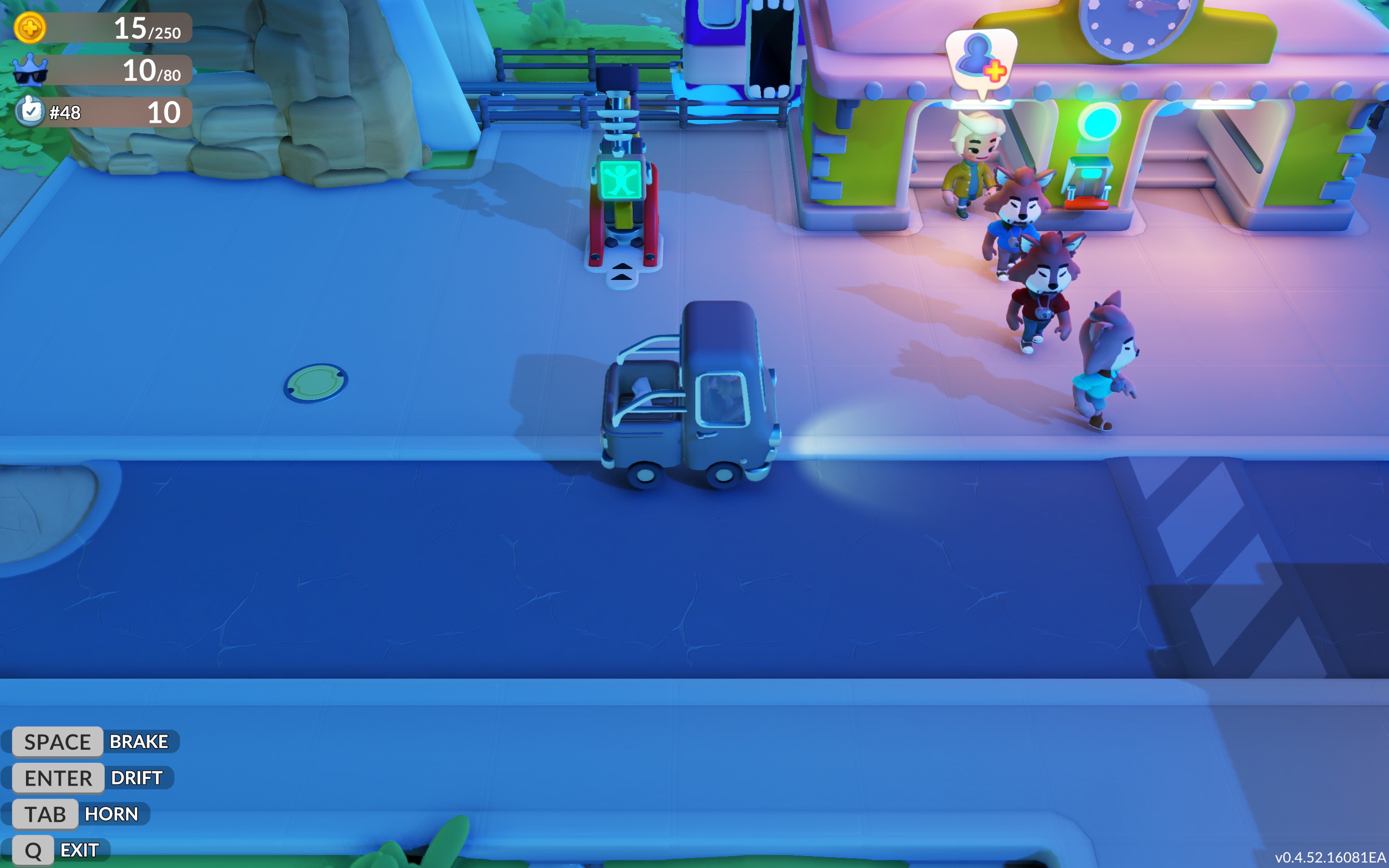
All those actions have a pleasing physicality thanks to the animations. When you hop off a bike with a full inventory the contents of your backpack leap in the air before settling back in place. Every time you dedicate a new building to its task you cut a ribbon to open it, and the cleaning tool for removing street garbage is a gun that shoots bubbles of cleaning fluid.
“I believe the term we use is squishy,” Vance says. “Keep things squishy. That's been a pillar in a way, the nice little squishy jumpies that you see.”
“I mean, the characters are only so big on the screen,” Massingham adds. “It's all about making reactions visible enough and emotive enough that you can see what's going on, understand what's going on, but also enjoy what you're seeing.”

Go-Go Town is a low-poly game, which adds to its readability but also ensures it runs well on handheld platforms. I imagine it'll get a lot of play on the Steam Deck. “We have designed the game for handhelds in general,” Massingham says. “Font size and interface size and control schemes and all those sorts of things. And performance obviously, try and make sure the game runs as well as possible. We've got the Steam Deck dev kits, and Cheryl does a lot of her own personal playtesting on hers. I've got a ROG Ally so I do a lot of stuff on that.”
Getting hold of a Steam Deck in Australia, where Prideful Sloth is based, isn't as easy as it is in some parts of the world. Steam Decks aren't available directly from Valve here yet, and so Vance had to get one indirectly.
“That was a rather amusing process that felt like some sort of illicit smuggling scheme,” Vance says. “Our community manager's based over in the US so last year, when I went over to GDC, she ordered one and brought it up to me and then handed it to me in a bag. I was like, I shouldn't feel like I'm some sort of criminal just because I got a Steam Deck!”

One of the best things about the small scale of Go-Go Town is that you're not handling a faceless mass like you would in a traditional city builder. Everyone who moves to town has a name and a distinctive look, which makes it easier to remember who I've put in charge of the fried “gronut” stand. “You can remember specific people in specific roles,” says Massingham. “The guy with the green skin, Grumbo, you remember him, and you remember the ghost and you remember the mummy with the Pharaoh hat.”
“I'm waiting for all the player feedback about wanting to romance Grumbo,” says Vance.
Prideful Sloth's plans for Go-Go Town include more player customization, expanded industries, and a bigger map. “Probably the biggest piece of feedback we've had from a lot of people is when they've reached the end of the game, their map is as full as it can be, but they want more space,” Massingham says. It's not as easy as just moving the boundaries further out, however. Tourists all arrive at the train station and propagate from there, so if the town gets too spread out they won't have time to explore the whole thing and see all its attractions before they catch their train home. The solution? “We'll add subways to the map,” Massingham says. “The player can set up various subway buildings and different lines, and the tourists and the player can use those to fast travel around the map.”
Go-Go Town is currently available in early access on Steam.

